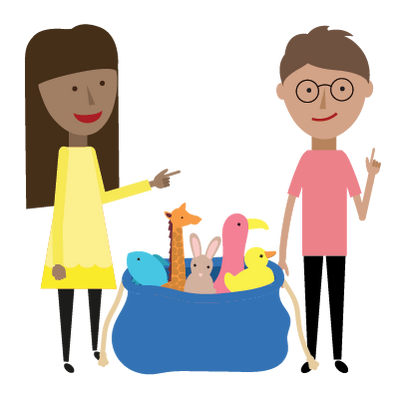Dr. Yeap Ban Har reveals finer points of new Foundations picture books
Mastery legend explains how art and imagination align to create ‘mathematically rich’ stories.
Q1: We love the way the new Maths — No Problem! Foundations picture books are illustrated. How did you decide on the mathematical themes for each story?
The themes come from the requirements of the Early Years Framework, which focuses on numbers and number patterns. So we tried to inject as many opportunities for children to engage with those as possible, but we also included themes that are not mentioned explicitly in the Framework — things like geometrical ideas, shapes, comparing lengths and area.
Q2: How do you see the books being used in the classroom?
The books are intended to be inspirational rather than instructional — not to instruct teachers on what to do, but to inspire them to do things in ways that are consistent with their beliefs about educating young children.
I can imagine teachers starting with reading the story, then focusing in on one page of the story to look at numeracy, then giving children concrete materials inspired by the illustrations on that page. Those teachers might revisit the stories at different points of the school year depending on what topic they are teaching, for example when they are looking at patterns or comparing lengths.
Other teachers may curate different pages from different stories when they are teaching a particular numeracy concept.
Q3: What is it that differentiates these books from other children’s storybooks?
The unique thing about these books is that the illustrations have been drawn purposefully to highlight and evoke mathematical ideas through the arrangements of items, their colours and sizes. Everything on the page was chosen to represent mathematical ideas, so the books are mathematically rich.

Q4: Can you tell us how the themes in the books tie into the Singapore Method of teaching maths?
The Singapore method focuses on the Concrete, Pictorial, Abstract approach which means connecting young children’s everyday real and imaginary worlds to mathematical ideas. The illustrations in the picture books are intentionally open-ended, meaning children can think about mathematical ideas in multiple ways. This links to the problem-solving approach, which is also a feature of the Singapore Method — thinking of multiple ways to do something, or looking at something and having multiple ideas about it. For example, a plate of eight items can be looked at as if it is one and seven or three and five, and the illustrations support this notion.
Q5: We don’t often think of reading stories as supporting maths learning. Can you explain why it is so important?
In early years, learning should be integrated rather than isolated in different subject areas. Having a book that allows children to develop literacy while also learning numeracy is useful for teachers who want to organise their day around a theme or story. Mathematics learning at this age is not just about content, but also developing language and social skills. The visual nature of picture books allows children to see numeracy and mathematical ideas in a way that captures their imagination.
Q6: In reception classes there can often be a wide range in rates of development. How do the storybooks (and the Singapore Method) reach children at all stages?
The illustrations have been done in such a way as to allow for differentiation — what Jo Boaler might call low floor–high ceiling. Children who are beginners might attend to counting. Those who can already count fluently may pay more attention to patterns. The visuals are intentionally open so children can take from them what they can.
Q7: And lastly, who is your favourite character from the books?
I must say “This ’n That” is my favourite character. I find him an interesting character as a ’fraidy cat, and I thought of making him a tangram cat – using tangram geometrical pieces. Representing the different emotions using lifeless geometrical shapes is both interesting and challenging. The illustrations are meant to inspire artistic talent amongst kids — we are hoping that some of the illustrations will link to other domains of learning including art.
Foundations — Your Reception Solution
This Early Years mastery programme encourages learning through play and sets children on a path to a deep understanding of maths.

